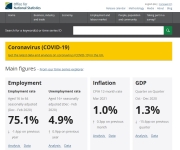

Almost nine in ten (86%) early retirees between 50 and 54 would consider a return to work as the cost-of-living crisis continues to hit their finances.
This compares to 65% of 55 to 59-year-old retirees and 44% of those between 60 and 65 years, according to the Office for National Statistics (ONS).
The ONS released figures today for workers over 50 who have left employment since the start of the Coronavirus pandemic.
The data is the result of a second wave of interviews which were conducted in August this year. It had previously surveyed the cohort in March.
A much higher overall proportion of those surveyed for the second wave of interviews said they would consider returning to work (72%) than said they would consider it during the earlier interviews (58%).
Those who had left their jobs and not returned were more likely to own their homes outright (66%) and be debt-free (61%) in comparison to those who had left their job since the pandemic but since returned to work (39% owning their house outright, 42% debt-free).
Only half (55%) of 60 to 65-year-olds were confident or very confident that their retirement provisions would meet their needs. Just a third (38%) of those between 50 and 54 were confident or very confident.
{loadposition hidden2}
Financial resilience varied by age, with those aged 50 to 54 significantly less likely to be debt-free excluding a mortgage (49%) than those aged 60 to 65 (62%), and more likely to have credit card debt (39% compared with 24%).
Health seems to have been a driving factor in sending many back to work.
Half (51%) of 50-65-year-olds who left the workforce and have not returned had a physical or mental health condition. Of those the vast majority (94%) said that they expected their conditions to last, or it had lasted, for over a year and over seven in ten (71%) said that it impacted their ability to carry out day-to-day activities.
A third (35%) of those who had left work and not returned due to a health-related condition were currently on an NHS waiting list for medical treatment. Overall, one in five (18%) of those who had left work and not returned were currently awaiting treatment.
{loadmoduleid 444}
Leave a Reply